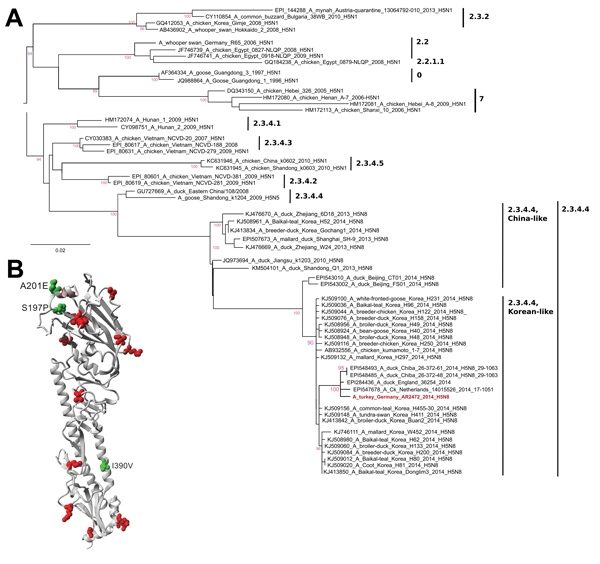Figure 2.

Phylogenetic analysis of hemagglutinin (HA) 1 nucleotide sequences of highly pathogenic avian influenza viruses subtype H5 from Southeast Asia and Germany. Insert shows the structural model of the HA protein of the German H5N8 isolate AR2472/14. A) Nucleotide sequences encoding the membrane-distal part of the HA1 of influenza A(H5N8) viruses were retrieved from public databases, aligned by using MAFFT (http://mafft.cbrc.jp/alignment/software) and phylogenetically analyzed by using a maximum-likelihood approach (best fit model: K3Pu+G4) implemented in IQ-Tree (http://www.cibiv.at/software/iqtree) (12). Numbers at nodes represent surrogates of branching robustness obtained by an ultrafast bootstrap approach (12). Scale bar indicates nucleotide substitutions per site. B) Model of an HA monomer of AR2472/14 with PDB:3FKU used as template. Green depicts unique mutations distinguishing this virus from other South Korea–origin avian influenza (H5N8) viruses; red indicates additional substitutions relative to the closest vaccine candidate within clade 2.3.4.4. (A/Sichuan/26221/2014 [H5N6]).
